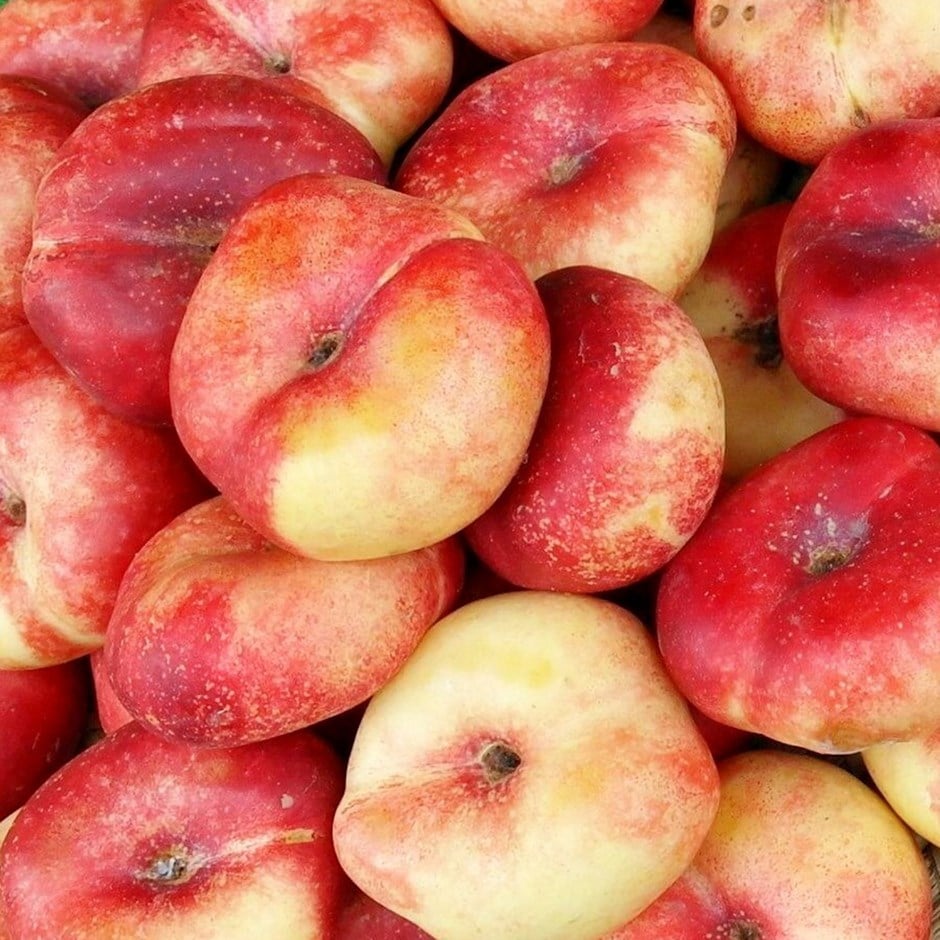nectarine 'Flat'
flat Nectarine
This plant is deciduous so it will lose all its leaves in autumn, then fresh new foliage appears again each spring.
- Position: full sun
- Soil: moderately fertile, moist but freely draining soil
- Rate of growth: slow
- Flowering period: April
- Hardiness:borderline hardy (may need winter protection)
An unusual donut-shaped nectarine prized for its sweet flavour and easy eating. This self-fertile tree produces abundant clusters of pink and white spring blossoms highly attractive to pollinators. The unique flattened, red-blushed yellow fruits have juicy, aromatic white flesh with a sweet, mellow flavour perfect for fresh eating. Ripening in mid-August, this nectarine prefers full and sheltered positions such as south or west facing walls for optimum fruiting, though also grows well freestanding in warmer southerly locations. For gardens wanting spring flowers and summer fruit, 'Flat' is a compact fruiting tree with the added benefit of uniquely shaped, delicious fruit.
When planting your nectarine, prepare a hole up to three times the diameter of its root system. Fork over the base of the pit in readiness, incorporating plenty of organic matter into the backfill and planting hole. Avoiding frozen and waterlogged soil, trees should be planted out as they arrive. If you've ordered a bare root tree, soak the roots in a bucket of water for half an hour prior to planting, or if this is not possible, they can be heeled in temporarily, covering their roots with soil, or potted up. In exposed positions, consider growing against or training on a sheltered, sunny wall, or stake firmly, keeping the base weed-free. Apply a balanced fertiliser in early spring to support growth and fruiting and provide regular watering during hot, dry spells. Protect blooms from late frost by covering the plant with a double layer of horticultural fleece, and prune in summer to reduce the risk of disease.

